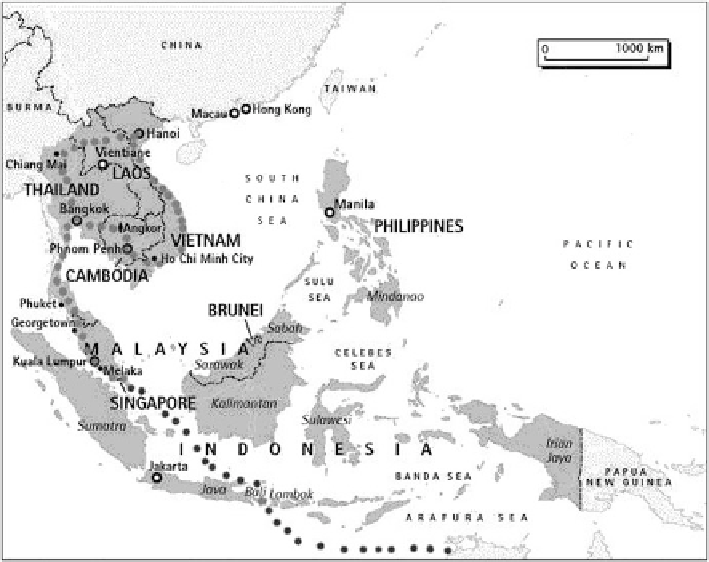Geoscience Reference
In-Depth Information
Fig. 15.1
Location map of the Philippines within SE Asia
1.1
Population, Growth and Distribution
The annual growth trend of the Philippine population stood at 2 % in the first half
of the twentieth century, surged in the 1950s, and reached a maximum of 3 % in
the 1960s. Growth rate gradually declined in the next two decades at just above
the 2 % level since then. The 2000 Census placed the Philippine population at
about 76.5 M. The National Census Office predicts that the Philippine population
is expected to reach 105.5 M by 2020. The population growth rate is still high by
regional standards and this extends the strain on limited resources to accommodate
such population increases (Figs.
15.1
and
15.2
).
The Philippines is divided into three major island groups:
Luzon, with an area of 141,000 km
2
;
•
Mindanao, with an area of 102,000 km
2
;and
•
Visayas, with an area of 57,000 km
2
.
•

Search WWH ::

Custom Search